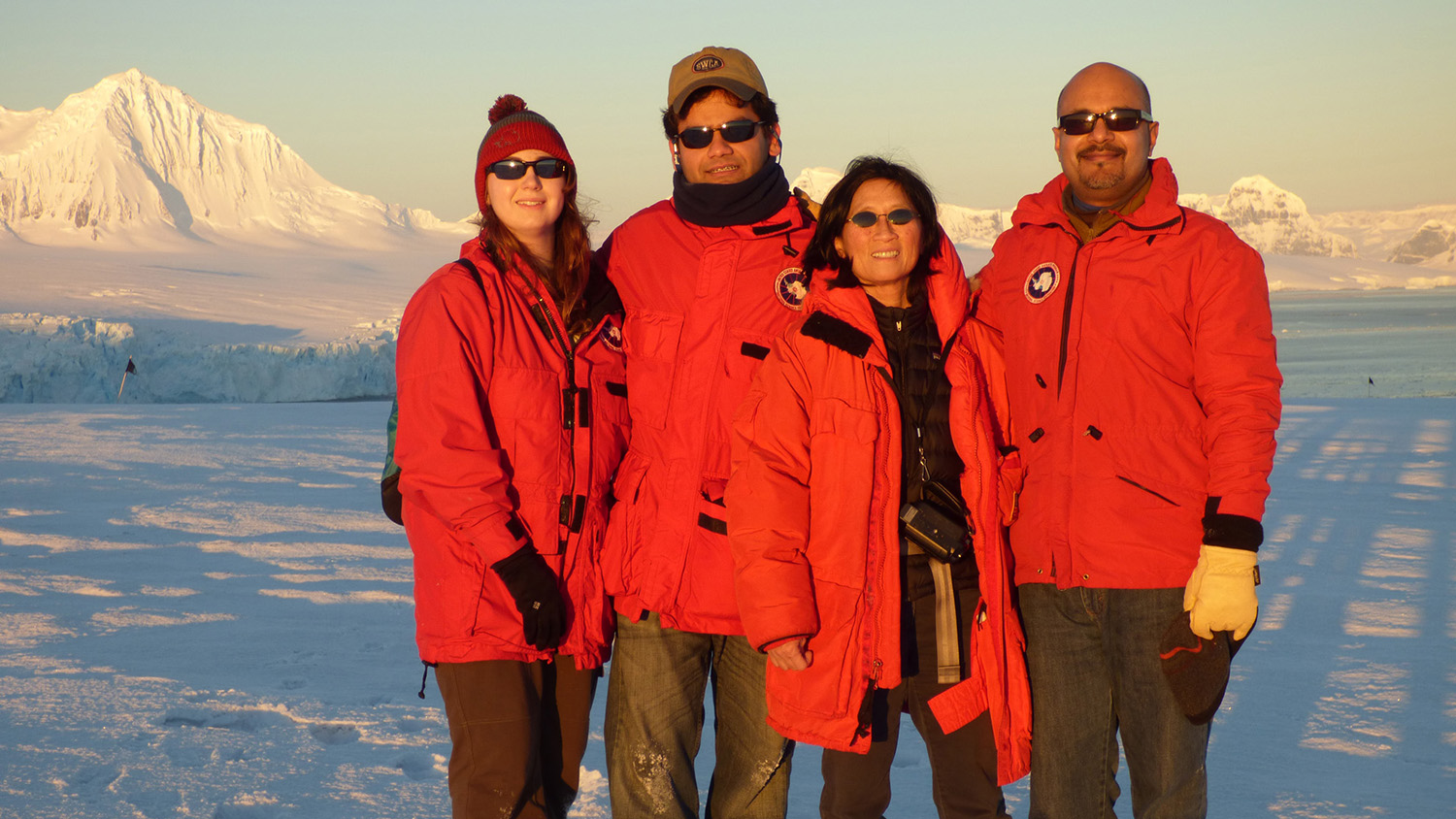In Antarctica: A Quest to the Bottom of the Food Chain

It’s 3:15 p.m. and the sun is setting at Anvers Island. Just off the Antarctic Peninsula, surrounded by 300-foot cliffs of ice, Jeannette Yen pauses outside Palmer Station to watch. The sun spills over the ice cliffs. The frozen landscape melts in a golden glow.
This is one of nature’s great laboratories. Yen and her team of scientists are conducting experiments here that are possible nowhere else. Outfitted in red parkas, they are not here to drill into frozen lakes or fly over thinning ice sheets. They spend what little daylight they have searching for tiny organisms in the frigid waters.
The scientists climb aboard the R/V Lawrence M Gould, a massive research vessel operated by the National Science Foundation (NSF). They cruise past giant icebergs and through rafts of loose ice to Palmer Deep, a location where the water is 2,000 feet (600 meters) deep. From the huge stern A-frame of the ship, they lower plankton nets into the zero-degree Celsius water and haul live animals aboard. In Antarctica, zero degrees Celsius is a pleasant day, but the recent bout of 80-knot wind gusts tells them the austral winter is on its way.
“The weather has been good,” Yen said. “We’ve gone out and have been collecting plankton all around.”
Yen, a professor of biology at the Georgia Institute of Technology in Atlanta, is on her second polar plunge. She’s an ecologist with an engineer’s eye. Her team of biologists and engineers haul each day’s catch back to the lab at Palmer Station, which provides no escape from the cold. There, the scientists study plankton swimming motion with video cameras in a room kept at zero degrees Celsius, to mimic the animals’ natural environment.
Plankton are the base of the food chain, but their environment is changing. Around the southern continent, the water temperature is stable at around zero degrees Celsius because of the Antarctic Circumpolar Current. Carbon dioxide, a potent greenhouse gas, easily dissolves in the cold water, acidifying the ocean. The acidifying oceans might be triggering a destructive chain of events underwater that could harm the food web around the world.
That’s why Yen and her team have come here, in search of a tiny organism that could be a canary in the coal mine of climate change.